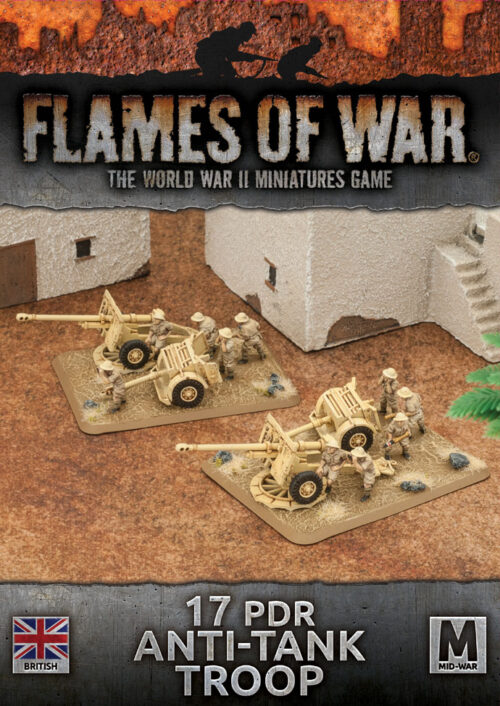Descripción
At the outbreak of war, the QF 2-pdr (QF stands for ‘quick firing’) was the standard anti-tank gun of the British Army. It was an adequate weapon for the time, being slightly more effective in terms of armour penetration then the contemporary German 37mm PaK 36. It was, however, larger and heavier and employed an unusual carriage that required the wheels to be removed before it could fire. Against the early panzers, light vehicles and the poorly armoured Japanese tanks it did well and was popular, meeting success in France, North Africa and the Far East.
Though the rapid rate of improvement in German armour made its replacement inevitable in Europe, it soldiered on rather longer against the Japanese and in light vehicles such as armoured cars, whose realistic defence against enemy tanks was flight. As a side-note, the BEF lacked sufficient 2-pdrs and as a result was partially equipped with French 25mm Hotchkiss AT guns, which can be represented by the same entry for players fielding BEF forces.
Models supplied unassembled and unpainted after the war ended. The 6-pdr replaced the 2-pdr as the standard weapon in British tanks as it became available, but even as it did so, a replacement was being sought. Although HE shells were available, the limited size of charge meant they were relatively ineffective, making the 6-pdr less than ideal as a tank gun and leading to the development of the 75mm weapon used in British tanks such as the Cromwell and Churchill. The QF 6-pdr used by British airborne forces had a special carriage that allowed them to be towed as if they were light anti-tank guns.
Models supplied unassembled and unpainted





